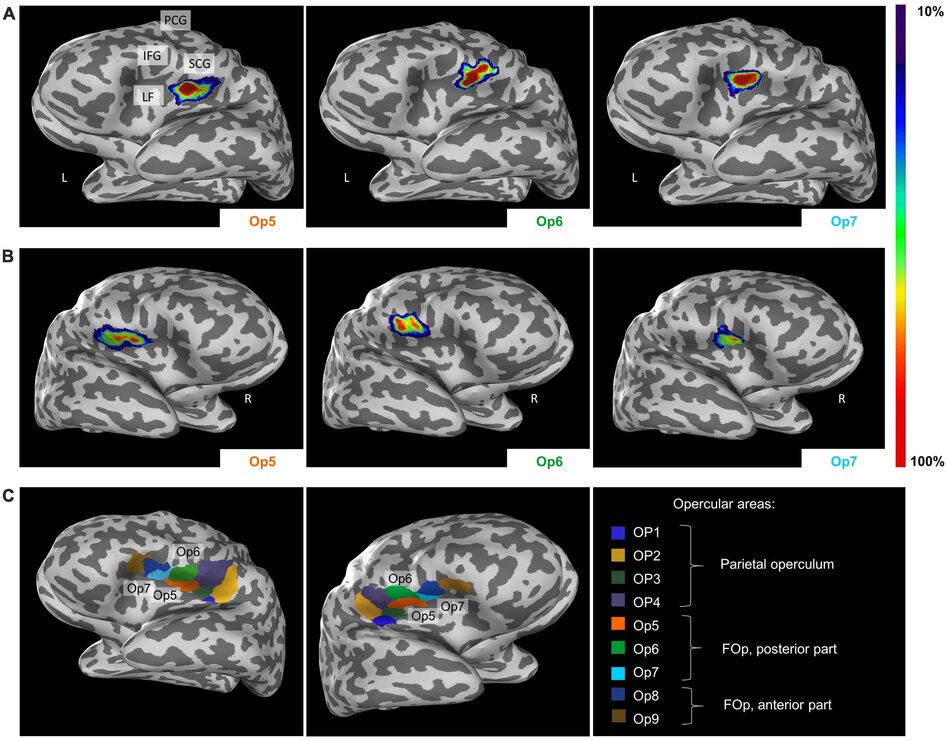HBP researchers from Germany performed detailed cytoarchitectonic mapping of distinct areas in a human cortical region called frontal operculum and, using connectivity modelling, linked the areas to a variety of different functions including sexual sensation, muscle coordination as well as music and language processing.
The study contributes to the further unravelling of the relationship of the human brain’s structure with function, and is the first proof-of-concept of structural and functional connectivity analysis of the frontal operculum. The newly identified cytoarchitectonic areas have been made publicly available as part of the Julich-Brain Atlas on the EBRAINSplatform, inviting for future research to further characterise this brain region.
Based on cell-body stained histological sections in ten postmortem brains (five females and five males), HBP researchers from Heinrich Heine University Düsseldorf and Research Centre Jülich identified three new areas in the frontal operculum: Op5, Op6 and Op7. Each of these areas had a distinct cytoarchitecture. Connectivity modelling showed that each area could be ascribed a distinct functional role.
Specifically, sexual sensations and chewing/swallowing were assigned to area Op5 in the right hemisphere, while both Op5 and Op6 showed activation during muscle exercise, for Op6 right specifically coordination of flexion/extension. In addition, Op6 left played a role in music processing and was assumed to be involved in the broader language networks. “Especially the fact that one of the considered areas, namely Op6 left, showed most evident connection with the music and language network, was new and interesting to us,” says Nina Unger, first author of the study.
The operculum (‘little lid’) covers the insular cortex and is located adjacent to Broca’s region. Broca’s region, together with Wernicke’s region, are the classically defined brain regions involved with language processing and speech. However, anatomically, classical Broca’s region is still ill-defined, and previous functional imaging studies had already hinted that the neighbouring operculum was also involved in language processing, as well as other cognitive functions.
The HBP researchers corroborated these neuroimaging data with 3D maps of the three new areas, that they generated of each of the 10 brains. Connectivity modelling was performed using the BrainMap database, and the connectivity data can be accessed online via the 3D atlas viewer ‘siibra-explorer’, available on the HBP’s EBRAINS research infrastructure.
